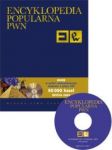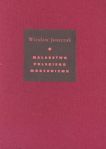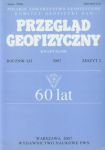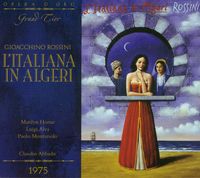The Italian Girl in Algiers, premiered in 1813, was the first of Rossini’s comedies to exhibit his fully mature style, and one of the first to establish his unquestioned dominance in the opera world of his day. It literally overflows with delightful melody, rhythmic verve, and sparkling humor. The most famous numbers in the score are Isabella’s spectacular coloratura aria “Cruda sorte,” and the thunderingly farcical final ensemble of the first act, which never fails to bring down the house. This live 1975 performance from Italy’s greatest opera house stars American mezzo-soprano Marilyn Horne, whom Opera News called “probably the greatest singer in the world” in 1981. Across her forty-year career she was recognized as the greatest Rossini interpreter in modern times. Luigi Alva (b. 1927) was the leading lyric tenor of the fifties and sixties, admired for the purity of his tone, elegance of phrasing, and clarity of diction. His specialties were Mozart and Rossini. Claudio Abbado has also had a long career on the podium, and has long been recognized as one of the world’s foremost conductors. Grand Tier presents the most popular titles from the budget Opera d’Oro catalogue at mid-price with complete librettos newly translated, stimulating essays by eminent music writers, and deluxe packaging with striking artwork commissioned from Rafal Olbinski.
"Here, in addition to the staggering virtuosity and the pointed characterization we’re used to [from Marilyn Horne], we get wonderful humor and the impression that she is having a simply terrific time … Abbado’s leadership is a sheer delight, and the La Scala forces are in grand shape. The sound is very good. At this price—or possibly any price—this can’t be beat.” — CLASSICSTODAY
Ciężar
0.22
Autorzy
Marilyn Horne, Luigi Alva, Paolo Montarsolo, Enzo Dara, La Scala Orchestra & Chorus
Format
14.0x12.0cm
Oprawa
Plastikowa
Rok wydania
2006
Dla tego produktu nie napisano jeszcze recenzji!
Napisz recenzjęWłaściciel sklepu internetowego nie gwarantuje, że publikowane opinie pochodzą od konsumentów, którzy używali danego produktu lub go kupili.


















